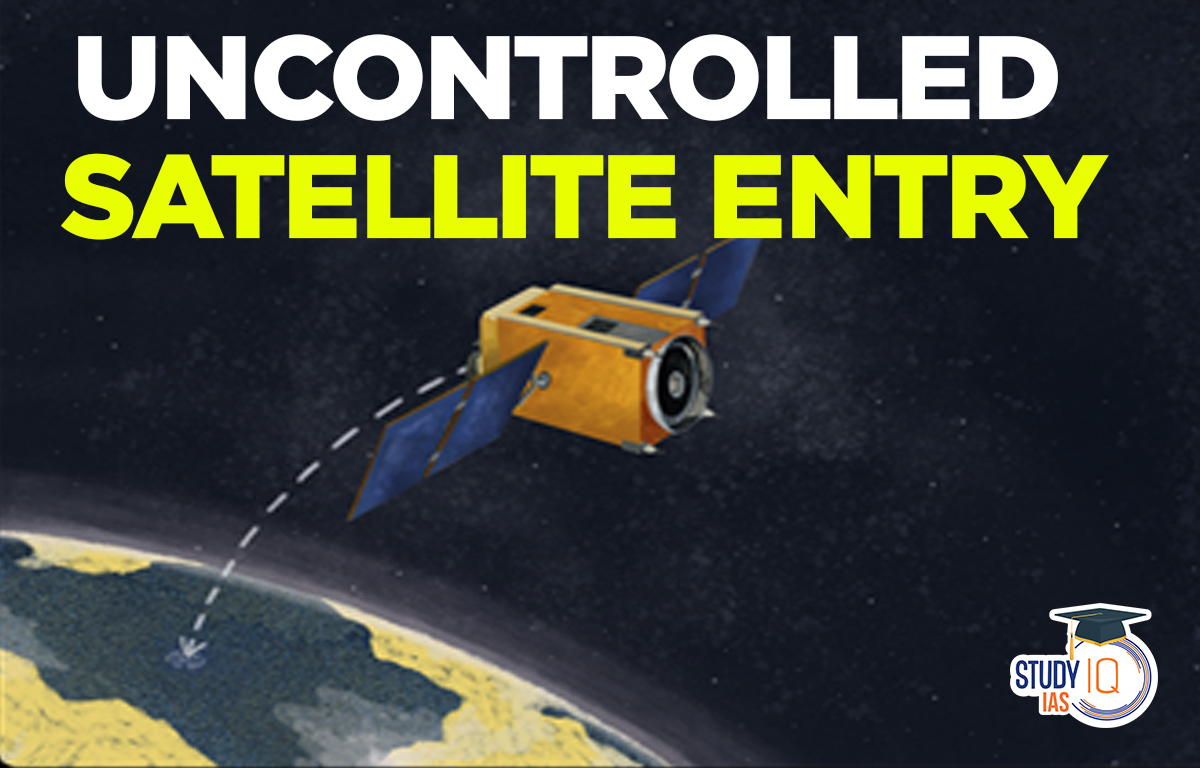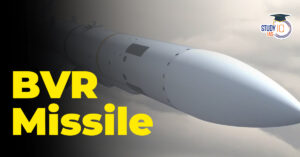Table of Contents
Context: Experts and dignitaries have signed a letter calling for both national and multilateral efforts to restrict uncontrolled re-entries of satellites.
Background of Uncontrolled Satellite Entry
- Currently, there are more than 6,000 satellites in orbit, most of them in low-earth (100-2,000 km) and geostationary (35,786 km) orbits.
- Rocket launches: Rockets work on multiple stages. Once a stage has performed its action, the rocket sheds it.
- Some rockets shed all their larger stages before reaching the destination orbit while others carry the payload to the orbit, and then perform a deorbit manoeuvre to begin their descent.
- In both cases, rocket stages come back down to the earth — in controlled or uncontrolled ways.

What is Uncontrolled Re-Entry of Satellites?
- Uncontrolled re-entry is the phenomenon of rocket parts falling back to earth in unguided fashion once their missions are complete.
- The path taken by the rocket towards Earth is determined by its shape, angle of descent, air currents and other characteristics.
- As it falls, it disintegrates. The smaller pieces fan out, and the potential radius of impact will increase on the ground.
- Majority of the debris have landed in oceans principally because earth’s surface has more water than land.
Effects of Uncontrolled Re-entry
- Damage to aircraft: Debris from uncontrolled re-entry can impact anywhere on an aircraft, which may damage it, causing potential loss of lives.
- Contamination: Many parts of satellite contain chemicals that are not healthy for environment. They can contaminate both land and water.
- Human casualty: Even small parts can be deadly due to the speed at which they strike. This can even cause potential death.
Controlling Re-entry
- Global Convention: Currently, there is no international binding agreement to ensure rocket stages always perform controlled re-entries.
- The Liability Convention 1972 requires countries to pay for damages caused due to satellite re-entry, not prevent them
- Aiming Oceans: Experts have called for bodies to aim for an ocean in order to avoid human casualties.
- Modern design: Advances in electronics and fabrication have made way for smaller satellites, which are easier to build and launch.
- These satellites experience more atmospheric drag and thus are also likelier to burn up during re-entry.
Space Liability Convention, 1972
- Objective: The convention was created to supplement existing and future national laws providing compensation to parties injured by space activities.
- According to the Liability Convention, countries bear international responsibility for all space objects that are launched from their territory.
- Regardless of who launches the space object, if a space object was launched from State A’s territory, or from State A’s facility, or if State A caused the launch to happen, then State A is fully liable for damages that result from that space object.
- If two states work together to launch a space object, then both the partner countries are jointly and severally liable for the damage that object causes.
- Drawbacks: Claims must be brought on the state level only. Even if one person is making claim under the convention, he/she must arrange for his or her country to make a claim against the country that launched the space object.


 DRDO and Air Force Successfully Test Ind...
DRDO and Air Force Successfully Test Ind...
 IB ACIO Recruitment 2025 Notification Ou...
IB ACIO Recruitment 2025 Notification Ou...





















